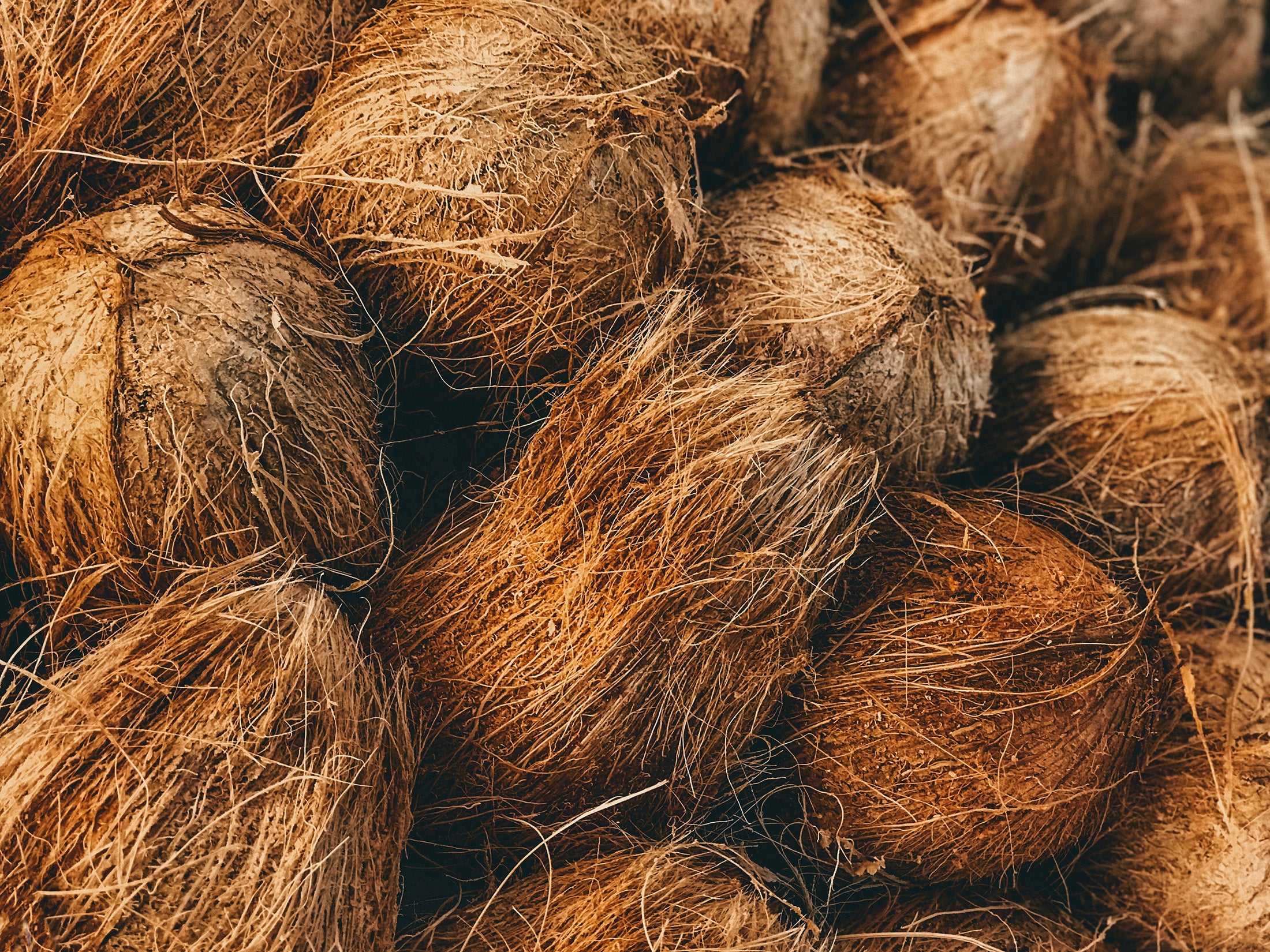What is Coco Coir?
Coco coir is an organic product derived from processing coconut husks from coconut trees grown in tropical and subtropical areas. The processing of coco husks to obtain coco coir involves a series of steps including aging, washing, rinsing, buffering, drying, grinding, grading, and compressing. These steps are necessary to change the physical and chemical characteristics of coco coir so that it is suitable for plant growing.
Prior to any treatment, coco coir’s cation exchange complex is naturally saturated with sodium due to coconut trees natural proximity to coastal areas and high tolerance for salt (sodium chloride). Coco coir’s initial salt content, measured by the electrical conductivity (EC), can range between 2 and 6 mS/cm - excessive for plant growing. Coco coir’s cation exchange complex also naturally contains large amounts of potassium, which competes with magnesium and calcium for uptake. Char Coir coco is abundantly washed with fresh water until reaching an EC below 1.0mS/cm (based on 1:1.5 extraction method). Even after washing, coco coir still contains residual sodium and potassium left in the complex, which can lead to nutrient lock up later. To stabilize the cation exchange complex and avoid nutrient deficiencies during the crop season, adequate buffering of coco coir is essential.

Buffering Process and Quality Standards
Washing and buffering are different processes that accomplish different goals. While washing removes only elements that are soluble in water, buffering also removes elements which are naturally bound to the cation exchange complex.
Why Buffering Matters
Buffering is especially important for growers who want to apply calcium and magnesium to their crops and/or growers who recirculate their drainage water. It provides more control over the amount of calcium provided to the crop and prevents excessive accumulation of salts if not draining to waste.
If the coco coir cation exchange complex is not buffered, the positively charged cations applied to the plants, such as calcium and magnesium, will have a stronger attraction to the coco complex and become unavailable to plants (nutrient lockup), while potassium and sodium, less attached to the complex, will be displaced, come into solution and be taken up by the plant instead of calcium. This leads to all sorts of crop problems - from excessive salt uptake by roots to calcium deficiencies, which is something growers wish to avoid at all cost.
Calcium is a crucial regulator for plant’s growth and is involved in nearly all aspects of plant development. Some of the most noticeable signs of calcium deficiencies tend to appear on new, upper leaves and include dead spots, crinkling, spotting and mottling, small brownish spots, stunted growth, small and distorted new leaves, curled tips, leaf die-off, etc. Clearly not a situation a grower wants!
Buffering coco prevents all this since in buffered coco coir, the cation exchange sites have already been occupied by calcium while sodium and potassium have been washed away.
Most coco coir being sold today is washed, but not all coco coir is nutrient buffered. Clean, buffered Char Coir coco is the choice for any grower who wants healthy happy plants that reach their full potential.
To find a Vendor of Charcoir Products please visit our Vendor Locator Page
For more info on RHP certification please visit https://www.rhp.nl/en/home
MSDS, Chemical, and Metals Analysis Documentation available here.

